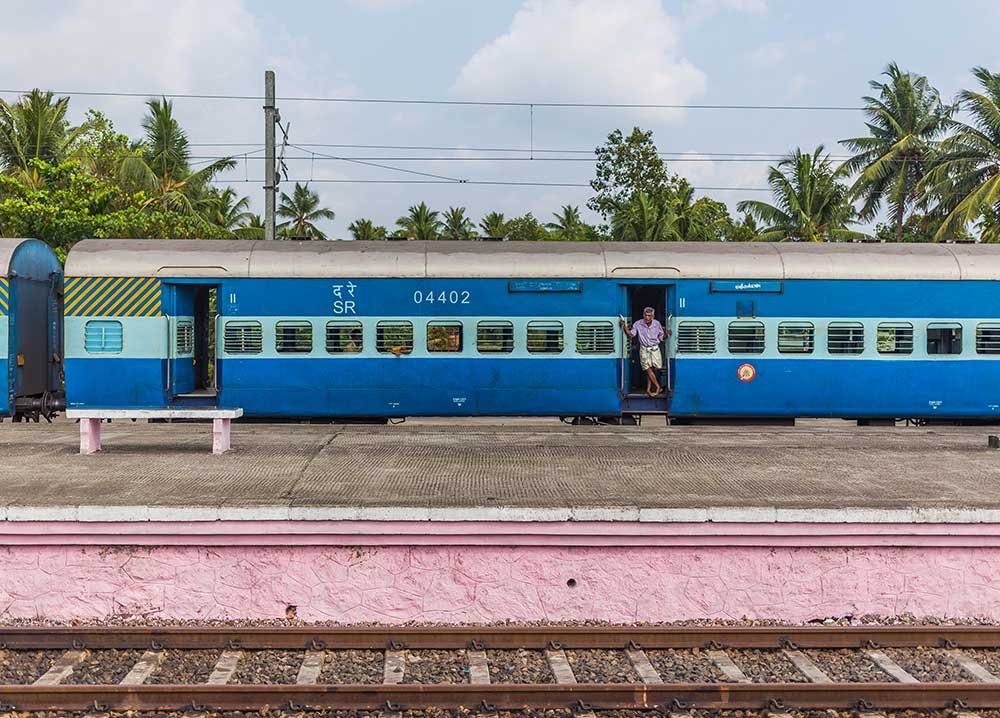Top Things to Know When Visiting India (Helpful Tips)
Read some of the top things to know when visiting India. From getting around, paying for things, culture, social etiquette and more.

India is a country that will certainly make it onto the bucket list of curious travellers. A trip to this ancient land promises architectural, cultural, spiritual and gastronomical experiences. But it is not a destination where you want to come uninformed and unprepared. Here are some top tips to help you plan and enhance your great Indian experience.
Menu
- Visas
- Layout and Getting Around
- Currency and Payments
- Local Food/ Water
- Getting a Sim
- Weather/Climate
- Getting a Sim
- Safety
- What to wear
- Respect the Cultural Difference
- Other useful things to know
Visas
You need to apply for an Indian visa if you’re planning a trip to India. Here are some things you need to know that can help you with the process of an Indian Visa.
- There are very few countries that have a visa exemption to travel to India. Everyone with passports in the European Union, UK or United States of America need to apply for an Indian Visa.
- Lots of visa related information can be found on ivisa.com/india-visa-application, including the eligibility, documents and duration of the visa.
- The Indian embassy provides the facility of an e-visa. There is no need for an agent for the completion of the e-visa process. It is a self-explanatory process. The Indian government strongly recommends against using an intermediate person to avail of this facility.
- The Indian tourist e-visa permits only to participate in activities related to tourism and leisure. For any other activities, such as work and business there are other categories of visa available.
Read more about India Visas
Layout and Getting Around
India is a vast country with mountains, coasts, deserts and plains. Every region of the country is beautiful in its own way. It’s impossible to explore all of the country in one single trip unless you plan to stay in the country for a long duration. Consider picking the place you want to visit by region so that you don’t waste too much time travelling around.
- All the major tourist cities are interconnected by flight, trains and buses. When travelling to smaller towns, you can hire a cab with a driver which are easily available and affordable. Do not think of self-driving cars in India. Indian traffic and road behaviours are beyond the understanding of most foreign tourists.
- Apart from private travel agencies mobile apps such as Uber, Ola can assist you with car rentals. Websites like TripAdvisor can help you with both hotel bookings and other tourism-related activities.
- Use an Uber or Ola cab to travel within the city. Most of the bigger cities have their service, and it will help you avoid unnecessary price negotiations or overpaying of the fare.
- Some autorickshaws/ tuk-tuks are available in almost every city for commuting. Always remember to negotiate the price first.
- Take into account the traffic congestion during rush/office hours.
- Delhi has an extensive metro network that covers major areas. The metro can be used to save time and money in Delhi. For more information about the Delhi metro visit www.delhimetrorail.com.
- Look on 12go for various routes between cities, as well as to book tickets if available.
- Finally, consider booking tours through sites such as GetYourGuide, Viator and G Adventures to help you explore the country and discover some of its hidden gems.


You may like:
Top Places to Visit in India
Currency and Payments
A trip to India can be as cheap or as expensive you want. From budget hostels to luxury accommodations and from street-side food to Michelin star restaurants, India is a country for all kinds of travellers. Here are some points that will help you regarding the currency of India and paying for things:
- The currency of India is the Indian rupee and is valued as approximately 1 USD = 73INR and 1 Euro = 86INR (at time of writing and subject to change).
- Most hotels and restaurants accept bank cards as a mode of payment. However, it is advisable to carry some cash in your wallet at all times, as many places such as small street shops and local transport will accept only cash.
- Credit cards and debit card co-branded with Visa or Mastercard are widely accepted for payments all across the country, whilst other card companies such as Discover, Diners or Amex, which have a more limited acceptance.
- There are ATM facilities all across the cities of India for withdrawing cash from your bank card. Keep in mind that your bank may charge you for using your card and the ATM may also have a charge.
- If bank cards are your primary mode of payment, then try to carry multiple cards during your trip to avoid any difficulties.
ADVERTISEMENT
CONTINUE READING BELOW
Local Food/ Water
With its curries, sweets and spices, a trip to India is synonymous with gastronomical indulgences. While you are at it do not get carried away and follow these rules to avoid getting sick.
- “Drinking water” is the primary factor to take care of. Remember that the tap water in India is NOT drinkable. You must avoid drinking water from anywhere except for mineral water bottles or RO purified water.
- The weather in India can quickly lead you to dehydration. It is important to carry an electrolyte sachet in case you feel exhausted due to a lack of water.
- Try and use disposables or paper plates and glasses while eating street food.
- Only eat at popular and running food stalls to make sure that food is prepared fresh.
- It’s better to stick to vegetarian options when trying street food. Meat from hawkers and local markets is highly prone to bacteria and can lead to food poisoning. In India, there is no dearth of choices for vegans and vegetarians. If you want to find a vegetarian restaurant in your vicinity, try looking on Happy Cow.
- Indian cuisine is known for its spices. Be sure to try it out gradually and with caution. The food can be customized to spice levels so go easy on your tummy.
- There are many types of food where cutlery is not used. A way to eat a curry is by folding it over with a piece of the bread that is served with it.
- There are many food delivery apps like Swiggy and Zomato that deliver food from restaurants all across the city to your doorstep. These apps cater to all the big cities of India and come in handy if you chose to stay in your hotel after a busy day of sightseeing. They also help you to check the ratings of restaurants that you may want to try.
- Even if you religiously follow all the rules you can still get sick. There’s no need to panic. Go to a local pharmacy, there are probiotic and antibiotics medicines that are available over the counter. Medicines in India are very cheap (it is called the pharmacy of the world).
- If you need to consult a doctor, there are apps like Practo where you can seek doctors’ advice over the phone for a nominal fee. If you need to see a doctor in person there are good doctors everywhere at affordable rates. You can often check their rating and profile on the Practo app. Do not hesitate to trust the doctors of India. After all, they cater to a huge population and are very experienced.


Getting a Sim
As a foreign tourist visiting India, things will become a lot easy if you buy a local sim card. This will come in handy for navigating, checking reviews of a new restaurant, making online transactions and using apps like Uber, Swiggy and Practo.
- You must have an unlocked phone to use a sim in India.
- Airtel and Jio are the largest mobile networks. You can go to any one of the company stores to buy a sim. Their plans are cheap and offer 4G internet along with talk time.
- You can also buy a sim card at Delhi Airport and Mumbai Airport at the arrivals.
- You may need photocopies of your passport and India visa, along with a passport photo for the application.
Weather/Climate
India is a peninsula, surrounded by water on three sides and mountains in the north. The climate of the country varies.
- The northern part of the country has four distinct seasons- Summer, winter, spring, and monsoons. The temperatures range from 5 degrees centigrade in winter to 40-degree centigrade in summer. Tourists from Europe or America prefer winters to visit this region because for them winters are more pleasant.
- Southern India and the coastal areas like Goa and Mumbai do not have many temperature variations but, humidity might be a factor to consider during the months of summer and monsoon.
- Avoid the months between June to early September when it rains in India. Monsoons can create havoc in many cities. Landslides and flash floods are common in the rainy season in hilly areas.
- October to March are the best months to travel in most of the parts of the country.
- If you are planning to visit the states of Kashmir, Himachal, Uttarakhand or other mountain regions, travelling in the summer months between April to June will be the best. Since they can get cold and many attractions shut down because of snow.

ADVERTISEMENT
CONTINUE READING BELOW
Safety
You might have heard of India being referred to as “unsafe” for foreign tourists. This is not true, a trip to India is as safe as anywhere else in the world. The key to staying safe is being alert, street-savvy and not blindly trust anyone. Just like most of the tourist destinations of the world, India also has its share of scammers and frauds. These people would especially target tourists for some quick and easy money.
These are the common things that tourists fall prey to and might feel unsafe.
- Foreign women tend to receive unwanted attention from men if they dress inappropriately. The best way to avoid an uncomfortable situation is to dress modestly. See the “what to wear” tip (below).
- Not staying connected or having internet access. See the tip “getting a sim” (above).
- Using a non-metered taxi where the drivers can overcharge you. See the tip “Getting around”.
- Hiring an unofficial tour guide. They will be less informed and instead of showing you the place will take you to commission-based shops. Even if you fall into such a trap, avoid buying anything from such shops. They are normally priced higher than usual.
- Remember that there is no obligation to donate to any religious place in India. In certain temples, a priest might approach you to perform a ritual and ask for money in return. Do not engage in such activities. Limit yourself to just visiting and exploring the place.
- Street beggars are a common sight across the country. You will find people begging with the most innovative ideas while on your trip to India. Milk for the baby, a medical prescription and a pregnant woman are few such examples.
Read more:
Tips for Keeping You and Your Possessions Safe Whilst Travelling
What to Wear
Take into account two major factors while packing your clothes for your trip to India. First, India is at large a traditional society and second, it is a warm and humid country. Here are some tips on what to wear on your trip to this country.
- People here prefer to dress conservatively. Skimpy and revealing outfits not only attract unwanted attention but are considered a social taboo in India.
- A pair of shirts and loose jeans are a no brainer for your sightseeing days. Save your little black dress only for bars and pubs while in India.
- Wearing comfortable, loose clothing is ideal for the Indian climate.
- Invest in a pair of good walking shoes for your trip. You might have to walk on unpaved roads or jump over potholes on the street. Make sure that the shoes are easily removable. You are expected to take them off while visiting someone’s home or at religious places.
- While visiting a religious place, make sure to cover your legs and shoulders to show cultural respect. Pairing your outfit with a stole (shawl) or a scarf is a good idea. You can cover your head when required, save yourself from direct sunlight, and maybe even look cool!
- When in India, dress like an Indian. It is fun to buy and wear Indian attire with accessories for a new look. Tie and dye, block prints and hand weaved apparel is available at local markets. They are comfortable, colourful, cheap and chic.


You may like:
Top Cities to Visit in India
Respect the Cultural Difference
India is a country of over 1.3 billion people who practise a different religion, language and attire. Top this diversity with a big class divide then some commotion in the country comes as no surprise. The combination of people swarming everywhere, noisy streets and the difference between rich and poor might overwhelm you. Keep the following points in your mind and, your eyes and ears will adapt to your surroundings.
- Indians are warm-hearted and curious people. Befriending, staring and asking for a selfie is something that you might encounter more than usual (such as in the image above). Do not get offended or afraid by such actions. More often than not, it is a harmless way to initiate a dialogue.
- Do not be scared if you ask for help and people go out of their way to show you around. That’s how Indians are, more than welcoming.
- Cows are sacred. It’s illegal to sell beef in India in most of the states. It is best to refrain from eating beef.
- You will have to get used to other animals like dogs, monkeys and bulls roaming freely on the streets.
- Public display of affection between men and women is considered inappropriate in India.
- While the majority of the people are Hindu, but there are Muslims, Sikhs and Christians that also constitute the Indian population. You must be respectful of religious practises like Ramadan, where the Muslims observe a month-long fast. If you want to witness the festivities of Ramadan, you can go to cities like Hyderabad, Lucknow, Srinagar and Delhi to enjoy its spirit


Other Useful Things to Know When Visiting India
- Explore beyond the cities and visit some of India’s smaller villages. The pace of life will be slower, the air will be cleaner, and you’ll get a different insight into Indian culture.
- Public washrooms are difficult to find in India on the go. Even if you find one, there might also be hygiene issues. It is a good idea to carry toilet paper, a hand sanitiser, and a Peesafe spray for disinfecting your toilet seat.
- Expect delays in India. People are generally not very punctual to their given time. In addition to it, traffic might slow you down, and trains can take longer than expected. It is better to start early from your scheduled time and allow lots of time for delays.
- Many places don’t have a sidewalk. People in India don’t yield much to pedestrians while driving. Be very careful while crossing the roads.
- You can get by most of the time if you know English in India. There are English speaking guides and drivers available at all tourist spots.
- Alcohol is banned in a few states like Gujarat, Tripura, Manipur and Nagaland. But you can often legally get it by filling in some paperwork that your hotel will provide.
- Most drugs except for “Bhang” are prohibited in India. The laws are strict, and if one gets caught, it can lead to imprisonment. It’s best to stay away from such things while on your trip to India.
- Haggling is a natural part of shopping in Indian local markets. The seller will expect you to counter offer a lower price than he asked. If the seller won’t budge on the price, thank them and start to walk away. They will normally call you back and open up again for negotiations.
ADVERTISEMENT
CONTINUE READING BELOW
Summary
Travelling in India will be much more challenging than travelling in other countries. You might find yourself overwhelmed and exhausted at times. But the effort is worth the trouble because not many countries can give you such a varied exposure as India. And nothing but self-experience can prepare you for the diversity that you will find in India. Amidst all the chaos, there are incredible sights, warm locals and fascinating culture. You’ll find yourself falling into a love-hate relationship with this country. In the end you will be nothing but happy that you did visit this enchanted land.
Need more convincing? Have a read of Top Reasons To Visit India.
Find Accommodation






